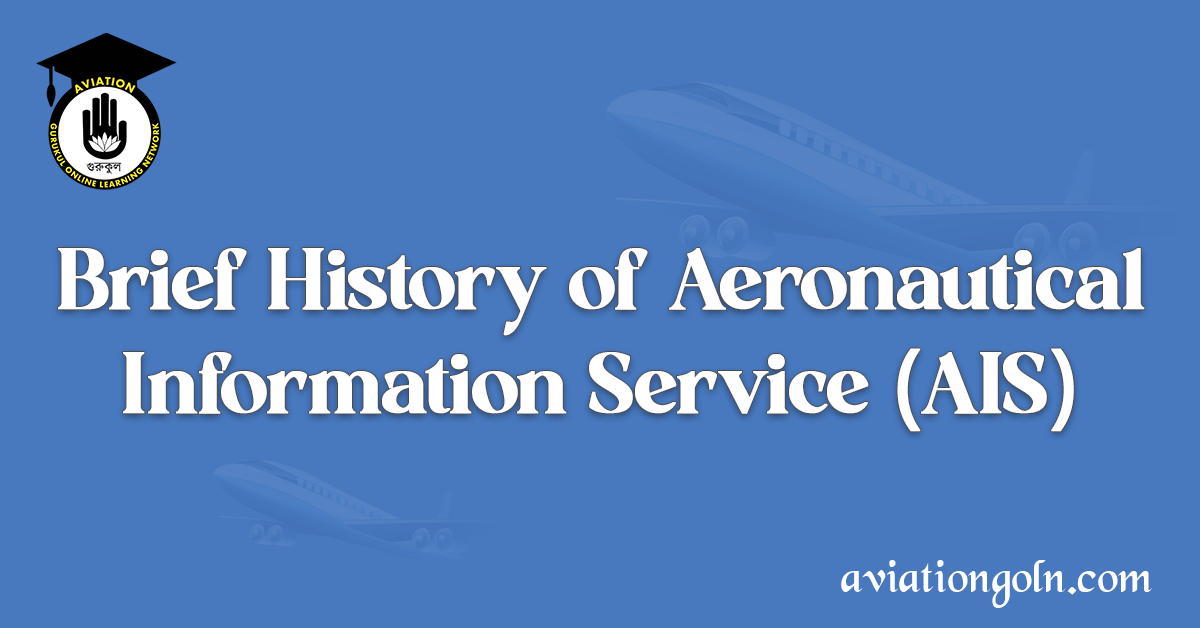The Brief History of Aeronautical Information Service (AIS): The history of aviation is characterized by innovation, exploration, and a relentless pursuit of safety. One of the essential elements that contribute to this safety and efficiency in aviation is the Aeronautical Information Service (AIS). The AIS plays a critical role in disseminating vital aeronautical information and data, ensuring that air navigation and related operations occur seamlessly. This article explores the history of the Aeronautical Information Service (AIS), highlighting its development, growth, and evolution.
Brief History of Aeronautical Information Service (AIS)
Early Days of Flight Navigation
In the early days of aviation, around the start of the 20th century, flight navigation was significantly rudimentary. Pilots relied heavily on visual references on the ground, basic instruments like compasses, maps, and mechanical timepieces to guide their routes. The dangers and inefficiencies associated with this approach were apparent as the skies began to fill with aircraft.
As the number of flights increased, the need for a more sophisticated system for navigation and flight planning became increasingly evident. By the 1920s, aircraft were flying longer distances, often beyond the visual range of landmarks. Air mail services in particular were pioneering night flights and transcontinental routes that required precise navigation.

Birth of Aeronautical Information Service
The initial concept of AIS was born out of the International Civil Aviation Organization’s (ICAO) resolve to establish global norms and standards for aviation safety. This came about after the 1944 Chicago Convention, where 52 nations convened to deliberate on a global aviation standard. The main objective of AIS, as stipulated by the ICAO, was to ensure the flow of information necessary for the safety, regularity, and efficiency of international air navigation.
Following this, the ICAO officially established the Aeronautical Information Service, laying down standards and recommended practices (SARPs) in Annex 15 to the Convention on International Civil Aviation. Annex 15 outlined how aeronautical information should be collated, verified, processed, and disseminated to ensure global uniformity and maximum utility for aviation.

Evolution and Growth of AIS
The AIS began primarily as a paper-based system. Information was collected manually, processed, and then distributed as documents to relevant stakeholders, such as air traffic control units, aircraft operators, and aviation service providers. This included Aeronautical Information Publications (AIPs), Notice to Airmen (NOTAMs), and pre-flight information bulletins.
However, as the number of flights grew exponentially over the decades, it became challenging to manage the sheer volume of data through this paper-based system. This issue became more pronounced with the advent of the Jet Age in the 1950s, where aircraft could fly at higher altitudes and longer distances, demanding more precise navigation.
To keep up with the growing demand for more precise and timely aeronautical information, the AIS gradually adopted electronic means of data processing and dissemination. This transition was not without its challenges, but it significantly improved the accuracy, reliability, and timeliness of the information shared.

The Digital Revolution and AIS
The technological advancements of the late 20th century had profound effects on the evolution of AIS. The rise of the digital revolution brought about new systems and tools, like satellite technology and advanced computing, transforming the way AIS functioned.
The Global Positioning System (GPS), for instance, provided more accurate and reliable navigation data. This not only improved the overall efficiency of air travel but also played a significant role in enhancing safety measures. As a result, AIS had to adapt and evolve its data management and distribution systems to meet these new requirements.
At the same time, advanced computing and digital systems also opened up possibilities for automating various AIS functions, significantly reducing the possibility of human error and enabling faster processing and dissemination of data.
The 21st century has seen the AIS shift from a static, product-centric service to a dynamic, data-driven approach. The AIS is in the process of transitioning to the Aeronautical Information Management (AIM) system. The AIM is more than just a change of name – it represents a paradigm shift from product-centric to data-centric methods. It seeks to provide digital aeronautical data that is of high quality, timely, and fit for the purpose of Performance-Based Navigation (PBN), among other navigation services.

Future Prospects of AIS
The future of AIS, now transitioning into AIM, is bright and filled with possibilities. With the rise of technologies such as Artificial Intelligence (AI), Machine Learning (ML), Big Data, and the Internet of Things (IoT), the way we manage and interpret aeronautical data is changing. These technologies can provide automated and predictive analysis, making air travel even safer and more efficient.
Moreover, the advent of new modes of air transportation, such as drones and urban air mobility vehicles, will necessitate further evolution of AIS/AIM. The system will need to manage more diverse and complex air traffic scenarios, providing accurate, real-time data for all kinds of aircraft, from traditional airliners to unmanned aerial vehicles.
In conclusion, the history of the Aeronautical Information Service is a story of continual adaptation and growth. It has grown from a manual, paper-based system into a sophisticated digital service essential for the safe, regular, and efficient conduct of flights. As aviation continues to evolve, so too will the AIS, ensuring it remains at the forefront of aviation safety and navigation.

